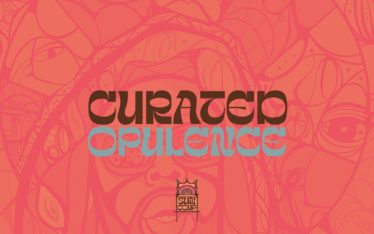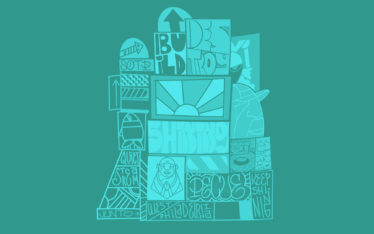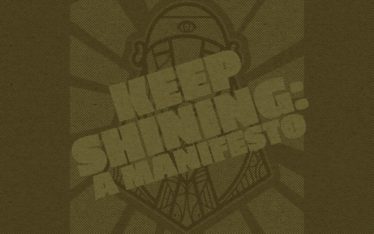In the last 6 or so years, the term Brand has become very fashionable, leading us toward certain criteria that we are advised to adhere to and frames to restrict ourselves. While I agree some of the various writings and have taken a lot of advice to both apply to myself and help others, I think that we should take a more organic approach to deciding how we want to display our interests in the world. Some of our interests and passions align with each other and some conflict. It’s probably a good idea to see where they align and capitalize on that, but just because some of them conflict doesn’t mean that you should scrap listing them as part of your story. Colin Wright says that gathering all of the different experiences that you encounter and the interests that you choose to pursue, curating the content that you find interesting and displaying them to the world is the best way to develop your own personal brand. It may not be the best idea to display all of them on your sleeve simultaneously, but fitting them together as part of your own unique puzzle can be beneficial in allowing you to display individual self in a digestible context When branding and niches became a topic of discussion, they made perfect sense to me, because I understood the concept from a young age through being part of what many would consider subversive subcultures. Since I was 13, I’ve had a continual interest in skating, punk, surfing, hip hop, and graffiti. It made sense to me that these weren’t for everyone, so I never saw the need to try to convince others why they were right. I liked them and so did my friends, so that put us in a group were we were able to share like minded values. Being a graffiti writer in Philadelphia (I was a complete toy), I was able to see how writers gained notoriety not just for paining the biggest, most colorful piece and expecting to become famous. You had to put tags and throw-ups (1 or 2 color bubble style letter fill-ins, see here) all over the city. This was not just random vandalism without direction, this was a citywide DIY guerrilla marketing campaign for the writer’s product, which was his/her style. Therefore, the idea of being ubiquitous on various channels of social media and has never been an issue of question to me. I’ve always been an observer of cultures and movements, and I see the way that modern business and brand development is conducted through the lens here. When I was 17, I walked into a boutique hip hop/sneaker store in Philadelphia called Bobbito’s Footwork, or Footwork Illadelph. This was a store owned by Hip hop Renaissance Man Bobbito Garcia and DJ/Poet Rich Medina. More than a record or sneaker shop, this was a living, breathing cultural center for Philadelphia (there was one in NY as well) hip hop and all of the niche subcultures that it encompassed. Footwork was a gathering spot for graffiti writers to but magazines and spray caps, DJ’s and producers to buy records, and MC’s to perform at open mic events. The workers were extremely knowledgeable about music, clothing, sneakers, and culture; they were incredibly generous to recommend new music and new brands that were coming through the store. In the way that we are experiencing a media renaissance with social media and the INTERNET, they 90’s housed a publication heyday of various hip hop magazines. Aside from the Source, which was the Bible of hip hop, we also were able to get On the GO, Ego Trip, Skills, Stress, and Mass Appeal just to name a few. These were closer niche rags who catered to specific audiences. I was most partial to On the GO, as it was originally based out to Philadelphia and featured a lot more underground independent hip hop and graffiti. Originally started as a tool for ESPO to act as the unheard voice of graffiti. However, as a newcomer to a scene buried one layer deeper than one I was used to, it was my guide to how I would perceive independent hip hop/graffiti culture. The guys at onethe go, namely Espo and Ari Forman, embodied the punk ethos with the quick wit and aesthetic of hip hop design. Somehow, the magazine delivered itself stylishly but with a certain gaudiness of tabloid stand adverting, which embodied a humor that I understood, devoured, and regurgitated for years to come. I got to see local graffiti heroes featured alongside the overseas and West Coast writers like Mike Giant and Twist. I read the record reviews from Max Glazer and the interviews conducted by Max and Espo. (This section is one that can easily be replaced by Wu Tang, but the Beastie Boys were more upfront with what they were doing, whereas WuTang presented their brand and allowed the different facets to reveal themselves in subsequent years through the Clan’s solo endeavors.) I’m one who enjoys different forms of creativity, both from others and myself. Enjoy, drawing, painting, designing on the computer and making music. I still get the same feeling when I pick up vinyl records as I did when I was 19. This was something I appreciated from the Beastie Boys, during the the Check Your Head-Hello Nasty Period. I have no insider proof, but I’ll write according to my perception, that the Beasties created one of the all-time great creative hubs in hip hop during the 90’s with G-Son studios and the Grand Royal label. The magazine, their videos, their music, and all surrounding elements were involved with some of my favorite artists today. Along with making amazing music, they surrounded themselves with the likes of Q-Tip, Spike Jonze, Mike Mills, Geoff McFettrith, Cey Adams, and Eric Haze to name a few. The magazine and label allowed them to collaborate and release music with Lee “Scratch” Perry, Abstract Rude, Mr. Lif, and many others. I guess the point of this is to highlight the fact that paying attention to different movements has influenced how I see branding. It has been in recent years that I’ve followed the likes of entrepreneurs like Chris Gillebeau, Colin Wright, Jonathan fields, and Pat Flynn, who are challenging the status quo of how business should be done. Going forward, I will be showcasing my art and design, thought on branding, creativity, and culture. I’ll also be highlighting my own work for clients and self-initiated projects. I look forward to sharing my thoughts and ideas one this, as well as showcase these through my work.Footwork Illadelph
On The Go Magazine
Grand Royal Magazine
[thb_image alignment=”center” image=”2054″ img_size=”full”]
[thb_image alignment=”center” image=”2055″ img_size=”full”]
[thb_image alignment=”center” image=”2056″ img_size=”full”]


